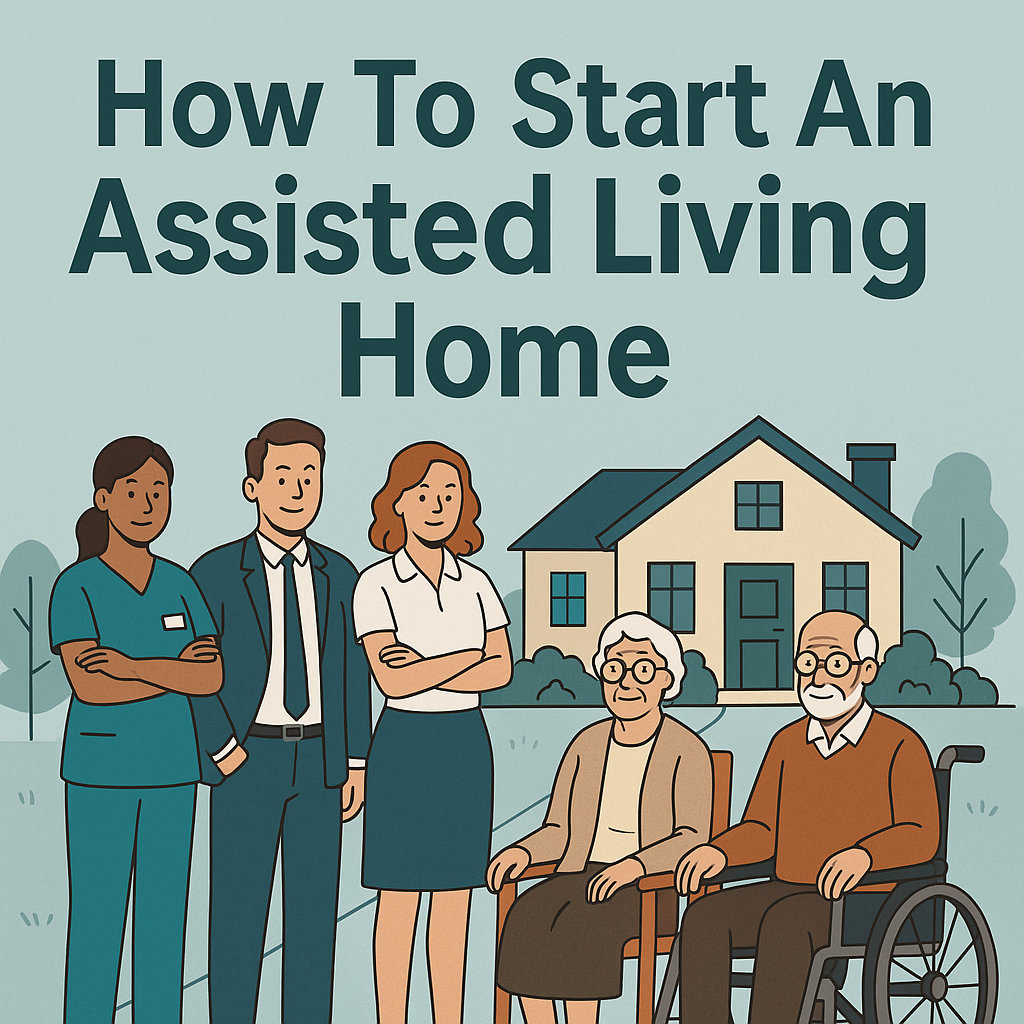America’s aging population creates urgent demand for compassionate care solutions. With 1.8 million seniors already residing in care residences, this sector offers both financial stability and personal fulfillment. By 2050, one in five Americans will be over 65 – a demographic shift creating unprecedented opportunities in elder care services.
The senior housing market spans cozy three-resident homes to full-scale 200-unit communities. This diversity means entrepreneurs can create spaces matching their vision and resources. Whether focusing on intimate family-style environments or larger campuses, there’s room for various approaches in this growing field.
Beyond financial benefits, care providers gain deep satisfaction from enhancing residents’ quality of life. Daily assistance with meals, mobility, and social engagement helps seniors maintain dignity during life’s later chapters. This work bridges a critical gap as family caregivers become less available nationwide.
Key Takeaways
- Senior care demand surges with 20% population aged 65+ by 2050
- Existing facilities serve 1.8 million residents across 28,000 locations
- Operations range from small homes to 200-unit complexes
- Combines financial opportunity with emotional fulfillment
- Addresses critical shortage of family caregiving options
Understanding the Assisted Living Industry
Senior care needs evolve as lifespans increase, creating dynamic opportunities in residential services. Current data shows 89-90% occupancy rates industry-wide, proving consistent need for quality options. This sector thrives on personalized approaches that balance safety with independence.
Market Demand and Demographics
The typical resident is an 83-year-old woman requiring support with daily tasks but prioritizing autonomy. Women make up 74% of residents, reflecting longer female life expectancy. With median monthly costs at $4,000, families seek value between independent housing and nursing homes. For guidance on regulatory compliance and licensing, the article on how to start a halfway house provides a helpful checklist.
Types of Assisted Living Services and Facilities
Four primary models dominate senior care:
| Facility Type | Key Services | Average Cost |
|---|---|---|
| Independent Living | Social activities, meal plans | $2,500-$3,500 |
| Assisted Living | Medication management, personal care | $4,000+ |
| Memory Care | Specialized dementia support | $4,800-$5,200 |
| CCRCs | Lifetime care continuum | $5,000-$10,000 |
Continuing Care Retirement Communities (CCRCs) stand out by offering tiered support as needs change. These communities often feature higher satisfaction rates due to reduced relocation stress. Memory care units address Alzheimer’s challenges while maintaining home-like environments.
Entrepreneurs entering the assisted living sector can benefit from learning how to start a group home to ensure compliance and long-term success.
Creating a Comprehensive Business Plan for Your Assisted Living Facility
Crafting a solid financial foundation separates thriving care residences from struggling operations. Effective planning balances upfront investments with sustainable income strategies while meeting strict regulatory requirements. When starting a assisted living home, understanding the complexities of owning an assisted living facility requires careful planning, licensing, adequate funding, and a genuine commitment to providing quality care for elderly residents while managing the business aspects of healthcare services and regulatory compliance.
Mapping Initial Investments and Income Potential
Forbes data reveals facility size dramatically impacts budgets. An 80-bed operation requires $11 million, while converting a single-family home costs under $200,000. Smart operators budget six months’ operating expenses upfront.
Typical monthly costs per resident:
- Staff wages: 30% of income
- Food supplies: 4%
- Insurance coverage: 3%
Revenue streams flex with service tiers. Base plans at $2,800/month cover essentials, while memory care packages reach $6,050. Transportation and therapy services boost profits.
Exploring Capital Sources and Support Programs
Multiple financing paths exist for new operators:
- SBA loans with extended repayment terms
- State grants for senior housing innovations
- Private investors seeking social impact opportunities
Pro tip: Combine funding sources to reduce risk. Many successful residences blend traditional loans with tax credits for senior-focused businesses.
How to Start a Assisted Living Home: Step-by-Step Guide
Establishing a successful care residence begins with strategic location selection and thorough market research. Proper planning ensures alignment between community needs and your operational capabilities, creating environments where seniors thrive.
Location Strategy and Community Analysis
Prioritize areas combining safety with accessibility. Ideal spots feature:
| Key Factor | Importance | Ideal Features |
|---|---|---|
| Healthcare Access | Critical | Within 5 miles of hospitals |
| Transportation | High | Near bus routes/paratransit |
| Local Amenities | Moderate | Pharmacies, parks nearby |
Conduct competitive analysis by comparing bed-type availability against local demand. Identify service gaps through surveys of area hospitals and senior centers. Entrepreneurs seeking opportunities in the healthcare sector can benefit from this practical guide on how to start a mobile drug testing business.
Operational Framework Development
Create clear protocols for daily operations and emergencies. Essential documents include:
- Admission criteria matching your target population
- Staff training requirements for specialized care
- Emergency response plans meeting state codes
Design spaces promoting independence through wide doorways and grab bars. Balance safety features with inviting common areas that encourage social interaction.
Managing assisted living startup costs effectively while learning how to open a residential care home, how to open a senior care home, and how to open an elderly care home requires substantial planning and capital, understanding how to start a personal care home and starting a retirement home business
with proper licensing and compliance, exploring how to buy an assisted living facility versus building new, discovering how to open a assisted living home and how to open a care home with appropriate staffing, learning how to open care home facilities and how to own a care home successfully, and properly opening an assisted living facility that meets state regulations and provides quality care for residents.
Navigating Licensing, Regulations, and Certification
Obtaining proper credentials forms the backbone of any reputable care residence operation. Every state maintains unique licensing requirements, with applications often taking 6-12 months to complete. Partnering early with local health departments prevents costly delays. For tips on building a collaborative learning schedule and dividing roles, check out our informative article on how to start a homeschool co‑op.
State-Specific Licensing Processes
New York exemplifies rigorous certification standards. Operators must first secure adult home licenses before applying for assisted living status. Some states mandate additional certifications like:
- Enhanced licenses for chronic medical conditions
- Special needs designations for dementia care
- Memory care endorsements requiring staff certifications
California requires earthquake readiness plans, while Florida prioritizes hurricane preparedness in its licensing evaluations. Always verify current regulations through official state portals.
Health and Safety Compliance Essentials
Fire safety systems and medication logs receive intense scrutiny during inspections. Most states demand:
- Emergency power generators tested monthly
- Staff-to-resident ratios of 1:5 during waking hours
- Documented infection control protocols
Voluntary accreditation through groups like the Joint Commission boosts credibility. These certifications often lead to higher insurance reimbursements and preferred provider status.
Maintain compliance with quarterly staff training updates and digital record-keeping systems. Many facilities use compliance software to track expiration dates for licenses and certifications automatically.
Establishing a Quality Care Program and Staffing Strategy
Building a dedicated care team forms the heart of exceptional senior support services. The right mix of medical expertise and interpersonal skills creates environments where residents thrive. Three core elements define success: qualified personnel, continuous education, and compassionate engagement.
Building Your Care Dream Team
Certified nursing assistants form the frontline of daily support, while licensed nurses handle medical needs. Social workers address emotional well-being, and activity coordinators spark joy through tailored programs. Dietary specialists ensure nutritional needs align with health requirements.
Administrative professionals keep operations smooth behind the scenes. From billing specialists to facility managers, these roles require both organizational skills and understanding of care standards. “Technical competence matters, but empathy transforms service quality,” notes a veteran care director.
When opening a senior living home, understanding how to start an assisted living facility and how to start an assisted living home requires careful planning, whether you’re learning how to start an independent living facility or how to start a residential assisted living business, as starting an assisted living facility involves knowing how to start a memory care facility, how to start a assisted living business, how to start a care home, and how to start an assisted living business, with starting an assisted living home being similar to learning how to start a senior living home, how to start a independent living facility, or how to start a independent living home, while mastering how to start a residential assisted living and how to start an assisted living means starting assisted living home successfully, discovering how to open senior living home, how to start a assisted living facility, how to start a residential assisted living home, and how to start a retirement home business, as you learn how to start assisted living home, how to start residential care home, start assisted living business, and focus on starting a residential assisted living facility, understanding how to start assisted living business and how to start assisted living facility, knowing how to open an assisted living facility and how to start a residential care home, learning how to open an assisted living home while determining what do you need to start an assisted living facilitiy and how to buy an assisted living facilitiy, discovering how to open a senior living home and how to start a residential care facility, exploring how to start an assisted living in my home options to start an assisted living home, with starting a residential care home and starting an assisted living business being your ultimate goals.
- Prioritize candidates with verified credentials and emotional intelligence
- Implement monthly workshops on dementia care techniques
- Use fingerprint background checks for all hires
Ongoing education keeps teams sharp. Quarterly CPR refreshers and medication management updates maintain safety standards. Specialized Alzheimer’s training helps staff recognize changing needs while preserving resident dignity.
Retention strategies reduce costly turnover. Competitive benefits packages paired with recognition programs foster loyalty. Many successful residences report 30% lower attrition when offering tuition reimbursement for career advancement.
Effective Marketing and Community Engagement Strategies
Modern senior care providers connect with families through strategic digital outreach and local partnerships. Over 70% of adult children research care options online before visiting facilities. This makes a polished digital presence essential for attracting interest while maintaining community roots.
Building a Professional Website and Digital Presence
Your website serves as the digital front door to your services. Showcase warm, inviting spaces through professional photos and virtual tours. Include clear service descriptions and real resident stories to build emotional connections.
| Platform | Key Features | Best For |
|---|---|---|
| Website | Virtual tours, care plans | First impressions |
| Social Media | Event updates, testimonials | Community building |
| Google Ads | Location-based targeting | Immediate visibility |
Prioritize mobile-friendly designs with quick-loading pages. Local SEO tactics like “memory care options near me” help families find your facility. Update blogs weekly with topics addressing common caregiver concerns.
Networking with Healthcare Providers and Local Communities
Strong referral networks drive sustainable growth. Partner with hospitals and rehab centers through:
- Monthly lunch-and-learn sessions for discharge planners
- Shared educational resources about senior health trends
- Co-hosted wellness events at community centers
Attend neighborhood fairs with interactive booths demonstrating safety features. Collaborate with religious groups to host intergenerational activities. These efforts position your facility as a trusted community resource rather than just another care option.
Conclusion
Entrepreneurs today can address a critical societal challenge while building a sustainable assisted living enterprise. Over 10,000 Americans turn 65 daily, creating unprecedented demand for housing that combines independence with expert support. Families increasingly seek alternatives to home care, especially for conditions requiring specialized attention like dementia.
This sector offers flexible entry points matching various investment levels. Operators can launch cozy six-resident assisted living homes or develop full-service campuses. Success requires thorough planning – from local market analysis to staffing strategies – but modern tools simplify the process.
Proven frameworks now exist for licensing, operations, and resident care. Financial partnerships and digital marketing resources help new facilities thrive. By combining compassionate service with smart business practices, care providers create lasting value for communities and themselves.







